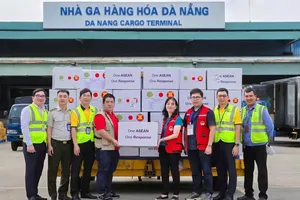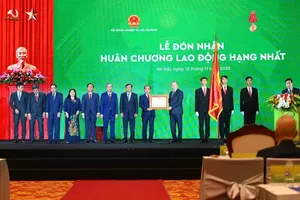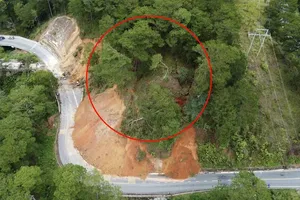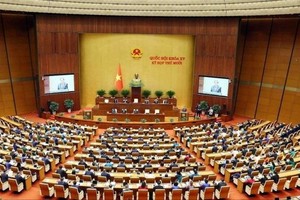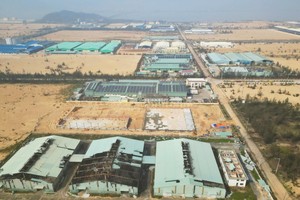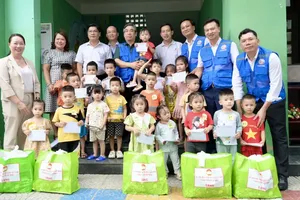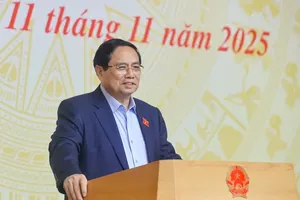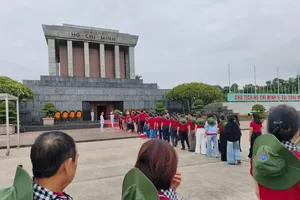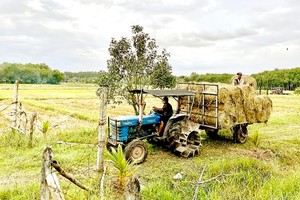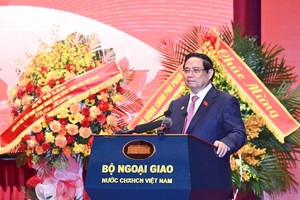
Converging strength of nation’s three premier development poles
Prior to this consolidation, HCMC served as the nation’s hub for finance, science, technology, and innovation; Binh Duong Province stood as a dynamic industrial engine; and Ba Ria – Vung Tau Province was the center for seaport logistics and maritime tourism.
When these three localities develop within a single new administrative and economic entity, a regional metropolitan structure will emerge, possessing a seamlessly integrated and tightly-knit production, service, and logistics capability.
The merger of these three dynamic southern poles into a new, expanded HCMC creates an economic and urban entity with an area exceeding 6,770km², a population of over 14 million, and a combined contribution of approximately 24 percent of the national GRDP as well as nearly 40 percent of the national budget.
When HCMC’s financial and service prowess is combined with Binh Duong Province’s abundant FDI inflows and connected to the Cai Mep – Thi Vai deep-water port in Ba Ria – Vung Tau Province, a complete production-logistics-trade value chain is immediately forged. This opens up a new frontier of development for the Southern Key Economic Region and the entire country amidst intense global competition.
Director Nguyen An Ninh of Binh Duong Province’s Department of Construction shared that the merger will form a smart mega-city, optimizing the unique strengths of each locality to create a cohesive region with complementary industries, services, logistics, seaports, energy, and tourism. The new HCMC will also accelerate investment in infrastructure, housing, and smart city initiatives befitting its new scale.
Assoc Prof Dr Nguyen Ngoc Vinh, Deputy Director of the Institute for Regional Research and Development Consulting (HCMC University of Economics), assessed that the formation of the new HCMC marks a strategic shift in restructuring the entire region’s development space, creating a new coastal urban-industrial-service center and a new engine for growth.
Experts envision the new HCMC with
- a regional-level international financial center in Thu Thiem urban area;
- a smart urban corridor connecting the cities of Ho Chi Minh – Di An – Thuan An – Thu Dau Mot – Ben Cat – Phu My - Vung Tau;
- an innovation corridor stretching from the Eastern Creative Urban Area of HCMC (Thu Duc City) to current industrial – service – seaport poles such as Di An, Ben Cat, Phu My, Ba Ria, Vung Tau;
- a smart port – logistics cluster at Cai Mep – Thi Vai – Can Gio according to the digital super-port model and an integrated logistics system operated by big data;
- a high-end eco-tourism hub in Vung Tau – Can Gio, positioned as a green, smart international destination, combining conservation with development.
Infrastructure breakthroughs to resolve inter-regional bottlenecks
Despite its immense potential, the new HCMC faces significant challenges, noted Assoc Prof Dr Nguyen Ngoc Vinh. These include incomplete transport and logistics infrastructure, a lack of integrated maritime spatial planning, and limited special financial mechanisms. A primary bottleneck has always been the weak and unsynchronized infrastructure connecting the provinces. The merger will allow for unified and seamless infrastructure planning and investment.
Acting Director Tran Quang Lam of HCMC’s Department of Construction informed that for the 2026-2030 period, the city plans to allocate an unprecedented VND766 trillion (US$30 billion) in public investment for transportation.
This will be a powerful impetus to complete Ring Roads 3 and 4 and the Ben Luc – Long Thanh Expressway, expand National Highway 13, and build the Thu Thiem – Long Thanh Railway, creating an effective cross-regional transport axis and reducing logistics costs, increasing the effective exploitation capacity of industrial parks, export processing zones, and agricultural raw material areas.
This functional specialization will allow Binh Duong Province to continue as a high-tech eco-friendly industrial center, Thu Duc City to become a hub for finance and innovation to serve startups, Can Gio-Vung Tau area to develop as an international-scale eco-tourism destination, Long Thanh and Cu Chi to develop high-tech agriculture associated with exports.
Dr Huynh Thanh Dien assessed that the transition to a two-tier local government model (province and commune/ward) is a breakthrough in administrative thinking. Abolishing the district level shortens the administrative chain, reduces policy implementation delays, and limits resource fragmentation. To succeed, the new entity requires integrated, region-first planning for infrastructure, urban development, and public services.
The new HCMC stands at a pivotal moment, poised to redefine its role as a national and global-stature mega-city. This coming July 1, the new HCMC will begin to take shape, with the potential to rise to the level of Asia’s leading metropolitan regions and serve as a vital international hub.
Head Truong Hoang Truong of Urban Infrastructure Department in the University of Social Sciences and Humanities (Vietnam National University – HCM) commented that the people of each locality are the primary resource for preserving and developing local culture. To maintain community identity, it is essential to encourage the community’s own participation in the management and development of its local culture.
Public policy expert Nguyen Tuan Anh said that this is a “golden opportunity” to form a polycentric, multi-center urban area with balanced development. The new HCMC cannot be merely an expanded copy of the old city. It must be a smart, green, creative, and prosperous city with global competitiveness, where citizens can live happily and are protected by a transparent, effective government.
The new vision for the new HCMC is to become an international super-metropolis of Southeast Asia – a smart, green, and creative city, exemplary not only for its economic strength but also for its cultural richness and dynamic lifestyle. The new HCMC will be a regional hub for finance, commerce, logistics, and high-tech industry, built on a foundation of digital technology and a green economy. It will strive to be a magnet for domestic and international talent, a cradle for innovation, and an influential city within the global network.
(General Secretary To Lam – working session with the Party Committees of HCMC, Binh Duong Province, and Ba Ria – Vung Tau Province)
